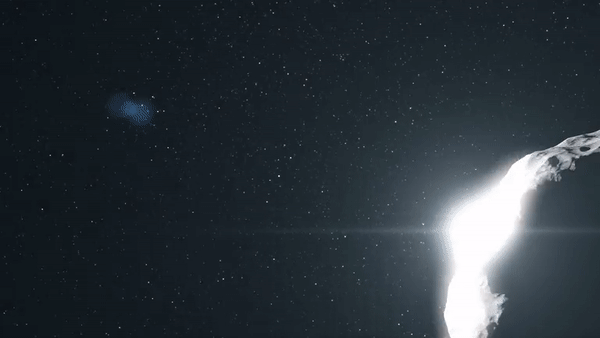What do we expect to see?

Don’t expect a detailed scene-by-scene video of the ‘boom’. LICIACube will observe the plume just a few minutes after the impact, performing its close fly-by 55 km from the asteroid's surface. What we should see with telescopes on the ground is a dot in the sky that should, suddenly, increase in brightness.
The images expected, of a speck nestled amongst the stars, are the bread and butter of astronomical research – they should reveal a great deal.
“The more material ejected from the asteroid, the greater the amount of material available to reflect the sun's light and so more it will increase in brightness in the sky,” explains Dora Föhring, Astronomer at ESA’s Near-Earth Object Coordination Centre.
“It’s the first time something like this has ever been tested, making it hard to predict just how much material will be released by the impact. Current estimates suggest it will increase in brightness by around a magnitude, but in the most extreme scenarios this could be as much as four.”



